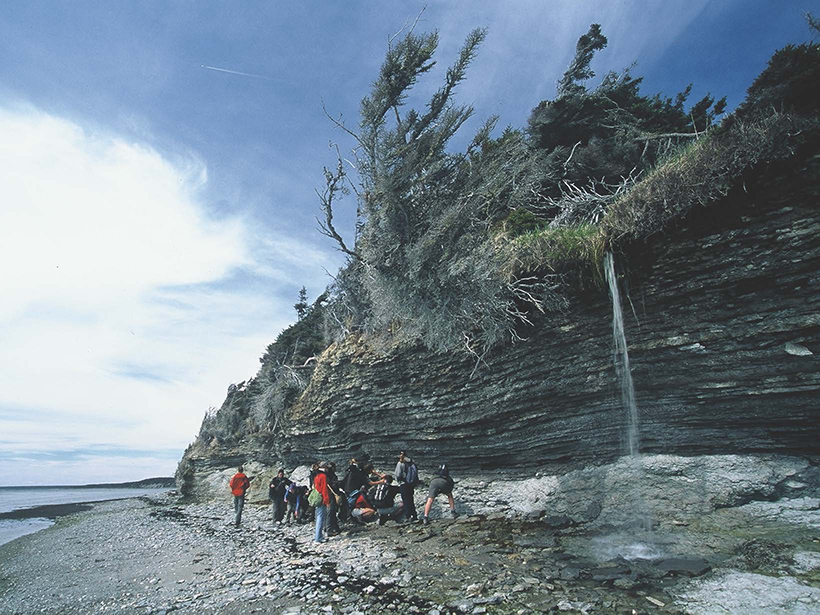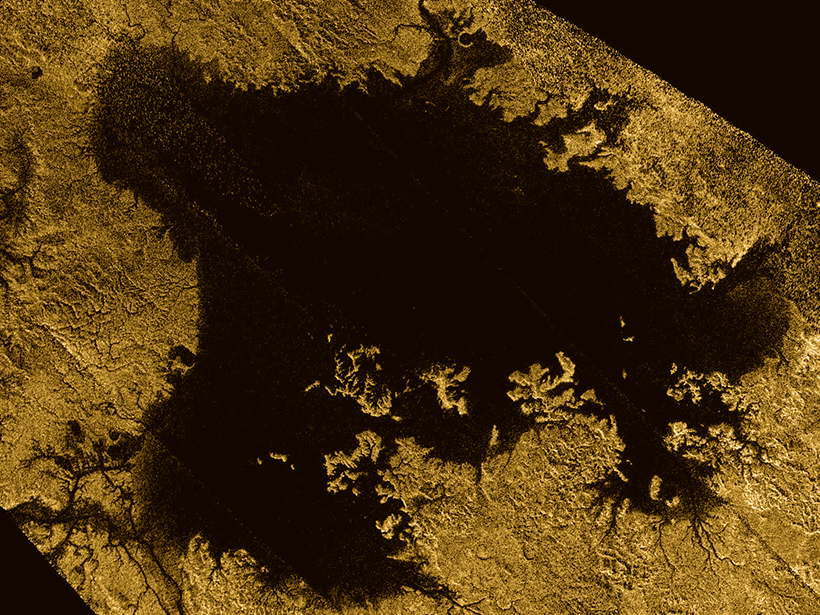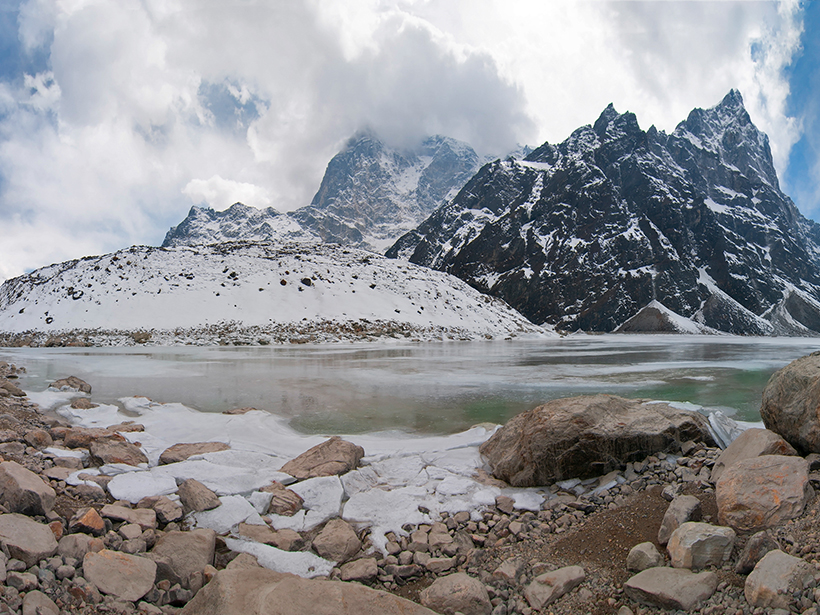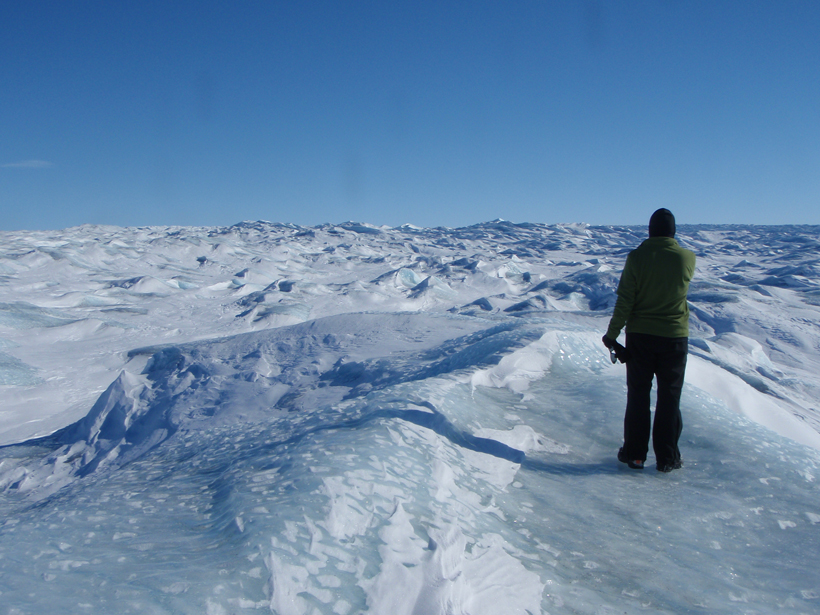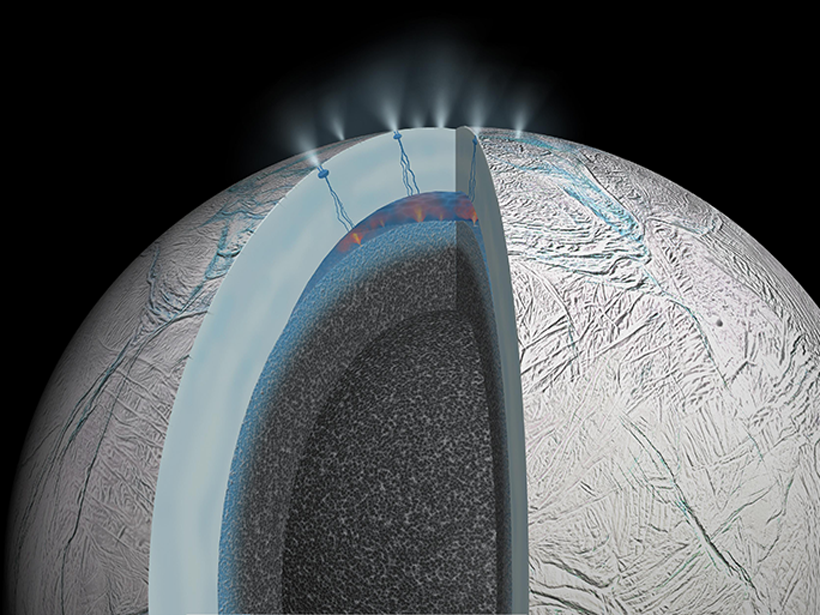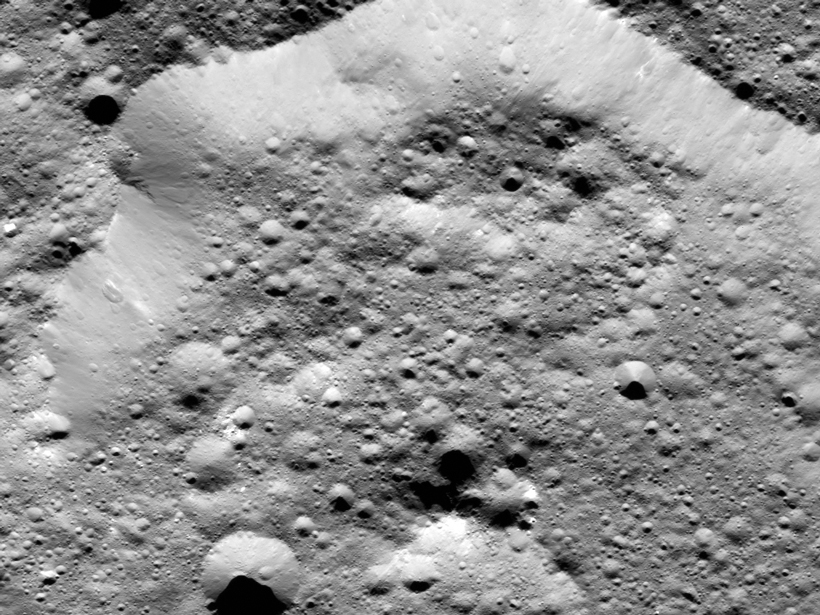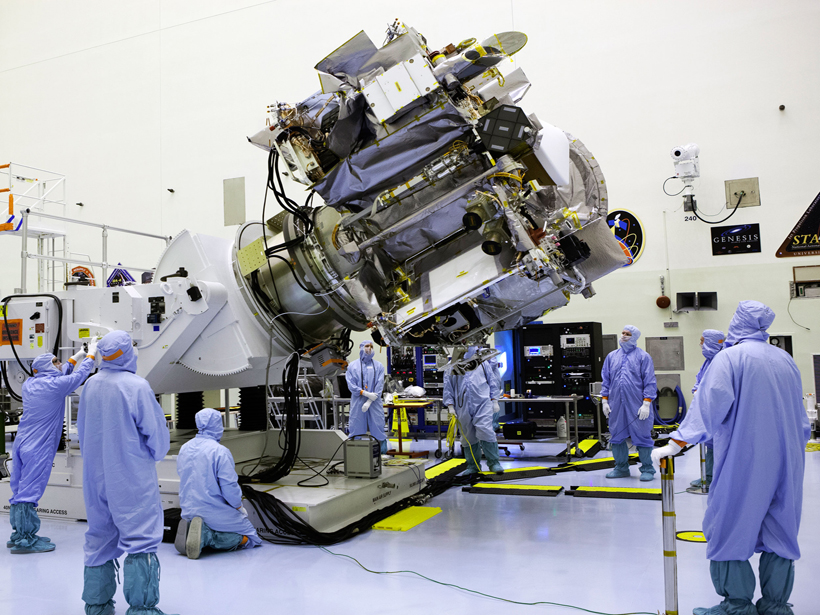An undergraduate experiment grew vegetables and herbs in simulated Martian soil under Mars-like reduced daylight. The tasty results suggest that Mars colonists could farm their own produce.
life as we know it
Clues Found That Earth May Have a Thermostat Set to “Habitable”
Weathering of rocks can control Earth’s temperature over geologic timescales, new geochemical data suggest.
Could a Newfound Molecule on Titan Be a Building Block for Life?
The discovery of vinyl cyanide in the atmosphere of Saturn’s moon Titan has huge implications for life—but not as we know it.
Climate Change Indicators Are Not Enough
Extreme events capture the public’s attention, but gradual climate shifts will more profoundly affect civilization and life on Earth. Scientists must get better at conveying this to the public.
New Instrument May Aid Search for Extraterrestrial Life
For 2 weeks on the Greenland ice cap, scientists tested an instrument that might help us find life on icy moons with oceans beneath their crusts.
Hydrogen Molecules Hint at Habitability of Enceladus's Ocean
Scientists suggest that the hydrogen could be evidence of hydrothermal activity on the ocean floor of Saturn's sixth largest moon.
Scientists Spot Organic Molecules on Ceres
The presence of organic material on Ceres raises new questions about its internal evolution and potential for hosting past or present life.
New Report Details How NASA Could Land on Europa
A team of scientists laid out extensive details about a hypothetical future landing mission to find life on Jupiter's moon.
Seeking Signs of Life and More: NASA’s Mars 2020 Mission
The next Mars rover will be able to land near rugged terrain, giving scientists access to diverse landscapes. It will also cache core samples, a first step in the quest to return samples to Earth.
To Bennu and Back
Justin Filiberto shares his experience as a guest at the OSIRIS-REx launch; a mission to obtain samples from the asteroid Bennu in hopes of learning more about the origin of water on Earth.


